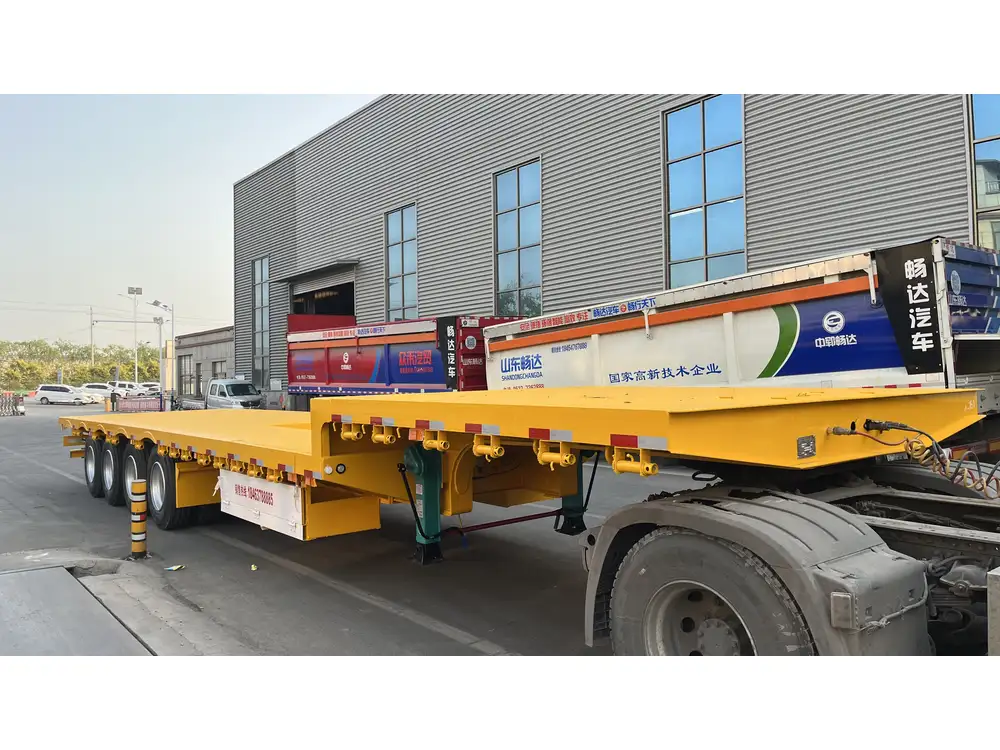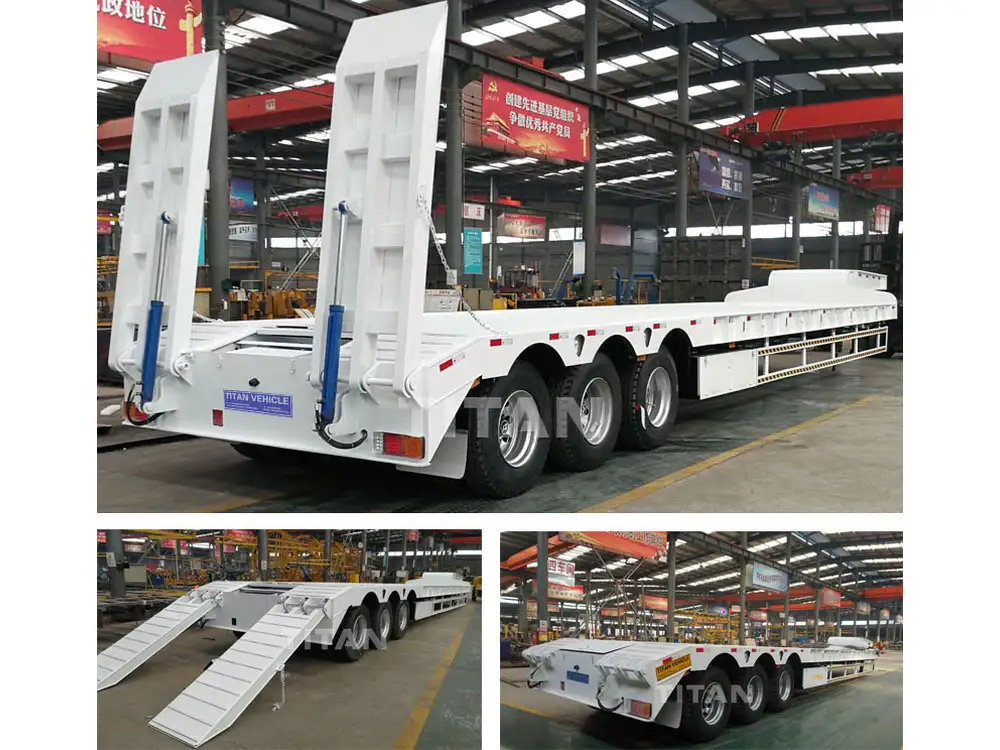When navigating the world of transport logistics and freight shipments in Australia, understanding the dimensions of semi-trailers is crucial. The width of a semi-trailer directly influences various aspects, from road safety to compliance with regulations, making it a vital topic for manufacturers, operators, and authorities alike. This article aims to provide an in-depth look at the width of semi-trailers in Australia, the associated regulations, and practical considerations for operators.
Regulatory Framework for Semi-Trailer Widths
In Australia, the width of semi-trailers is regulated under the Heavy Vehicle National Law (HVNL), which applies to all states and territories. This regulation aims to promote safety and efficiency on the roads. Below is a breakdown of the key regulations pertaining to the width of semi-trailers:
| Regulation | Description |
|---|---|
| Standard Width | The maximum allowable width for a semi-trailer is 2.5 meters (2500 mm). |
| Overall Width | The total width, including any load overhang, must remain within prescribed limits. |
| Permit Variations | Certain oversized loads may require special permits, allowing for increased width dimensions under strictly monitored conditions. |
Importance of Compliance
Non-compliance with width regulations can lead to penalties, accidents, and logistical challenges. Therefore, it is paramount for operators to familiarize themselves with the legal frameworks governing their operations.

Common Semi-Trailer Configurations and Their Widths
Among the various semi-trailer configurations utilized in Australia, a few stand out due to their common application in the freight industry:
1. Container Semi-Trailers
- Dimensions: These semi-trailers are primarily used for transporting shipping containers. They typically have a width of 2.5 meters.
- Advantage: Offers optimal loading capabilities, accommodating standard container dimensions.
2. Flatbed Semi-Trailers
- Typical Width: Generally conform to the 2.5-meter standard, yet can sometimes be slightly wider depending on design specifications for specific loads.
- Use Cases: Ideal for transporting heavy machinery and oversized cargo.

3. Refrigerated Semi-Trailers
- Width Specifications: Standard width remains 2.5 meters, ensuring compatibility with most loading docks and driveways.
- Functionality: Used for perishable goods, these trailers come with insulation and refrigeration units, enabling efficient temperature control.
Factors Influencing Semi-Trailer Width
The width of a semi-trailer can be influenced by multiple factors, from load requirements to the type of freight being transported. Understanding these factors is essential for operators to select the appropriate trailer configuration.
A. Type of Cargo
The nature of the cargo significantly dictates the required width of the semi-trailer. For example, transporting heavy equipment may require specialized trailers designed for added stability and space, while bulk goods can often utilize standard configurations.

B. Road Infrastructure
Australian roads vary from well-maintained highways to narrow rural routes. Semi-trailer operators must consider the type of roads on which they will travel. In rural areas, adhering to width regulations is crucial to minimize the risk of accidents.
C. Loading and Unloading Facilities
Operators need to assess the loading and unloading points. Facilities with limited space may pose challenges for larger trailers, necessitating careful planning and execution of transport routes.
Risks Associated with Oversized Semi-Trailers
Operating a semi-trailer that exceeds the standard width without proper permits can lead to several risks:

1. Legal Consequences
Failing to adhere to width regulations can result in fines and the potential immobilization of the vehicle, disrupting logistics and leading to financial strain.
2. Safety Hazards
Oversize vehicles require more space to navigate turns and may experience difficulty in adverse weather conditions, increasing the risk of accidents.
3. Damage to Infrastructure
Wider trailers may cause wear and tear on roadways, bridges, and tunnels, leading to increased maintenance costs for local governments.

Measuring the Width of a Semi-Trailer: Practical Considerations
Accurate measurement of a semi-trailer’s width is essential for compliance with regulations and to prevent operational issues. Here are key considerations:
Measurement Techniques
- Measuring Instruments: Use a measuring tape or digital calipers to assess the trailer’s width.
- Check for Overhangs: Consider any extensions on the trailer that might affect its overall width.
Regular Maintenance Checks
Conduct routine inspections to ensure that the width remains within legal dimensions, especially after modifications involving load or trailer customization.

Loading Considerations for Width Compliance
To maintain compliance while loading cargo on semi-trailers, consider employing the following best practices:
- Balance Load Distribution: Ensure the load is evenly distributed to avoid exceeding width limits on one side.
- Secure Cargo Properly: Use straps and nets to keep cargo secure and within designated width constraints.
- Transitioning Between Loads: Document any changes in load dimensions to ensure accurate assessments of width during transport.
Conclusion: Navigating the Dimensions of Semi-Trailers in Australia
Understanding the width of semi-trailers in Australia and the intricate web of regulations that govern them is imperative for operators in the freight and logistics sectors. By being informed about the legal requirements, common configurations, and measurement techniques, businesses can optimize operations, ensure compliance, and enhance safety.
As the freight industry evolves in response to ever-changing demands and technologies, remaining adaptable to regulations concerning semi-trailer widths will be instrumental in maintaining efficient and safe transport practices. Whether you are a manufacturer, an operator, or a logistics provider, staying abreast of these dimensions will aid in streamlining operations and ensuring a competitive edge in the market.
FAQs
What is the maximum legal width for semi-trailers in Australia?
The maximum legal width is 2.5 meters (2500 mm).
What types of permits are available for oversized trailers?
Permits vary by state and may include special operational permits allowing wider dimensions under specific conditions.
How can operators ensure compliance with road regulations?
Regular inspection and measuring of the trailer’s dimensions, in conjunction with understanding local rules, will help maintain compliance.
Can semi-trailers exceed the standard width for certain loads?
Yes, but operators must obtain the appropriate permits and adhere to specific regulations regarding the nature of the load carried.



